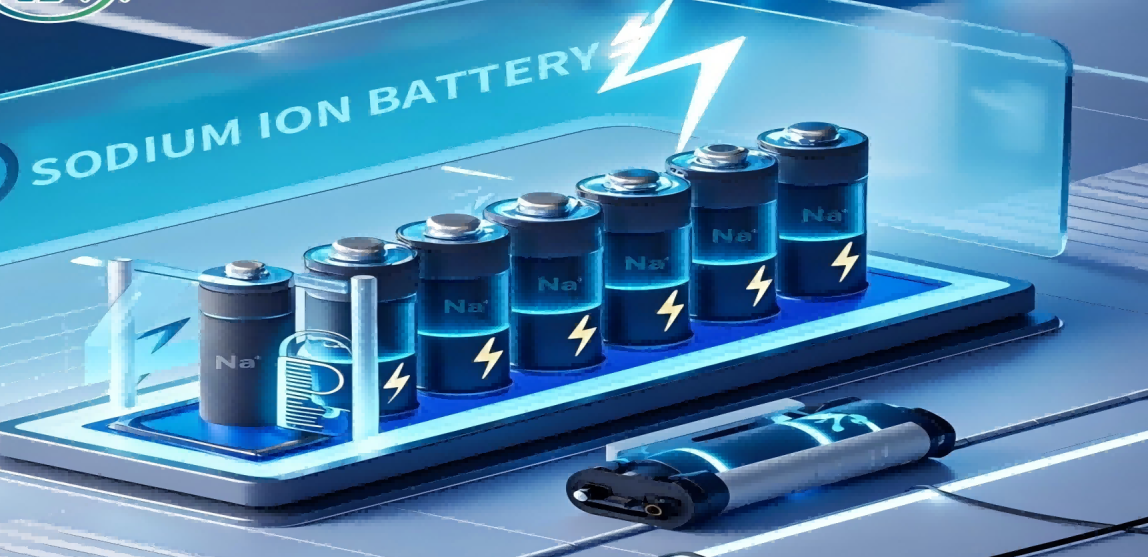Lithium-ion’s spectacular growth has exposed hard limits—price spikes for lithium and nickel, fire-safety worries, and a supply chain concentrated in just a few countries. Sodium is 500 × more abundant than lithium and costs pennies per kilogram at commodity scale. Swapping copper current collectors for cheaper aluminium and eliminating cobalt give sodium-ion cells an estimated 20–30 % cost head-start over LFP once plants exceed 5 GWh, according to BloombergNEF cost-modelling and several OEM road-maps.
CATL’s “Naxtra” marks the tipping point
In April 2025 CATL announced its Naxtra chemistry:
- 175 Wh kg-¹ gravimetric energy density—the highest sodium-ion figure published to date.
- >10 000 full cycles to 80 % state-of-health.
- 5 C charge rate (≈15 min to 80 % SOC) and 90 % power retention at –40 °C.
- A 40 GWh phase-one plant coming online in December 2025 to build passenger-EV packs.
CATL’s public goal is to shift up to half of its current LFP volume to sodium-ion by 2028.
Quick comparison of the leading players
| Company (HQ) | Energy density | Cycle life | Fast-charge (to 80 %) | Capacity & timing | Commercial status |
|---|---|---|---|---|---|
| CATL – China | 175 Wh kg-¹ | >10 000 | ~15 min | 40 GWh by 12/2025 | Mass-production line under construction |
| HiNa – China | 140–155 Wh kg-¹ | ≥4 500 | 100 % in ~25 min | 1 GWh line online since 2022 | First sodium-ion EV (Sehol E10X) on road 2023 |
| Reliance / Faradion – India & UK | 160–190 Wh kg-¹ (lab) | ~4 000 | ≤20 min | 30 GWh Jamnagar 2025 | Take-over complete; gigafactory building |
| Natron – USA | ~80 Wh kg-¹ (pack) | >50 000 | <15 min (100 %) | 24 GWh North Carolina 2028 | Michigan pilot shipping UPS cells |
| Altris – Sweden | 160 Wh kg-¹ | n/a | n/s | Pilot-MWh 2025 | Backed by Volvo Cars Tech Fund (Mar 2025) |
| TIAMAT – France | 140–160 Wh kg-¹ | >5 000 | ≈5 min | 0.7 → 5 GWh 2025-29 | Power-tool cells in market; plant site permitted |
Key sources: CATL April 2025 launch deck; HiNa presentation at the 2024 Battery Conference in Ningde; Economic Times coverage of Reliance’s Faradion purchase (Feb 2025); Natron’s August 2024 C&EN interview and company fact-sheet; Altris and Volvo Cars joint press release (March 26 2025); TIAMAT corporate brief and French government funding announcement (Nov 2024).
Market-moving headlines from the past 12 months
- Reliance Industries completed a full buy-out of Faradion and broke ground on a 30 GWh sodium-ion hub in Jamnagar, slated for late-2025 commissioning.
- Natron Energy secured US $ 1.4 billion to build a 24 GWh factory in North Carolina, targeting data-centre UPS and grid-storage markets.
- Volvo Cars became the first automaker to invest in sodium-ion, joining Altris’s Series B round to co-develop Prussian-white packs for stationary storage.
- HiNa shipped production packs for China’s budget Sehol E10X hatchback, proving real-world viability.
Future outlook (2026 – 2030)
| What to watch | Why it matters |
|---|---|
| Energy-density race to 200 Wh kg-¹ | CATL and Faradion both target that milestone by 2027, erasing the gap with current LFP cells. |
| Stationary storage beach-head | Natron’s 50 000-cycle, 15-minute-recharge packs could dominate 2-hour grid and data-centre roles where longevity and power trump density. |
| China’s small-EV segment | Sub-US $12 k city cars will likely adopt sodium packs first (range ≈250 km), creating instant mass-production volumes. |
| Hard-carbon supply chain | Low-cost anodes from bio-waste or pet-coke are the last major bill-of-materials wildcard. Whoever scales them cheapest will own the cost curve. |
| CO₂ and ESG credentials | With no nickel, cobalt, or copper, sodium-ion could become the battery of choice for buyers chasing low-carbon supply-chain scores. |
Bottom line:
With CATL’s Naxtra heading for mass production and more than 100 GWh of cumulative capacity now financed across three continents, sodium-ion is no longer a lab curiosity. If the cost and durability promises hold through 2026 field deployments, the chemistry is poised to grab double-digit market share in grid storage and short-range electric mobility well before the decade closes.
